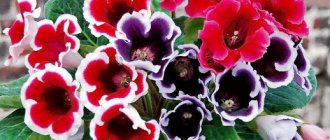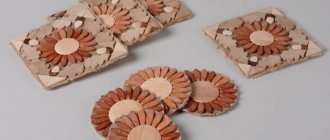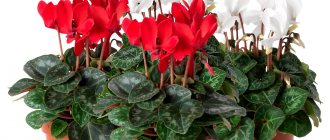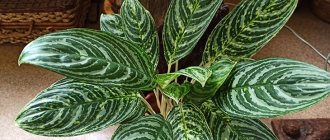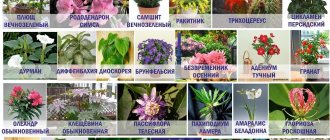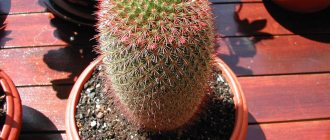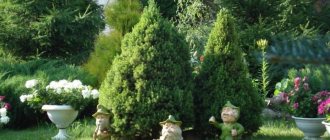If you're the type of person who follows fashion trends, this habit can continue in a variety of areas: from the choice of clothing and the latest technology you use to the choice of indoor plants. Some types of plants have gained great popularity recently, and we will tell you about them. As the new year approaches, the popularity of plants may change, but we have tried to collect the latest and most up-to-date information.
So, what are the trendiest indoor plants in 2020? The most trending indoor plants for 2021 are as follows:
- Money Tree
- Zamioculcas
- snake plant
- Philodendron white knight
- Peperomia Ginny
- Hoya majestic (imperialis)
- Philodendron with carved leaves
- Ceropegia Sanderson
- Tradescantia zebrina
- Alocasia Pink Dragon
- Neon Arrowroot
- Livistona Chinese
- cacti
- Spurge
- Stefania Pierrei
- Monstera deliciosa
While some of the plant types above may seem a little familiar to you, most of the options we're going to discuss in this article will make you look at the well-known houseplant in a whole new way. If you're ready to add some exciting new plants to your home garden, then keep reading.
Money Tree
This first fashionable recommendation for choosing indoor plants comes from popular glossy magazines, which named the money tree or Pachira aquatica the most popular indoor plant of the year. This wetland tree from the malvaceae family has also been declared the "easiest house tree" that doesn't require anything special to care for. The money tree received this status back in 2011, which proves that the popularity of the money tree has lasted quite a long time and is not losing ground.
In addition to being easy to care for, the money tree's stem is an excellent weaver, and its simple, bright green leaves can brighten up any room. If you are a fan of Feng Shui, it is believed that indoor plants such as the money tree can bring good luck and positive energy into your life. And who doesn't want to bring more positivity into their lives in 2021 or any year?
Zamioculcas
Zamioculcas is one of the well-known plants, but you are unlikely to find or have encountered a similar indoor plant before. Zamioculcas is also sometimes called the dollar tree. Already this year, the plant has attracted so much attention because of its signature dark color, which looks majestic and gothic. Whether Zamioculcas grows alone or is part of a larger home garden, this plant is definitely something to look out for. It's no surprise that WallyGro magazine named it first on its list of trendy plants for 2021.
If you're not so keen on dark color schemes, the variegated Zamioculcas plant is a beautiful mix of pale yellow and bright green. However, the black color of the plant looks much more impressive and unusual than other combinations. Before growing Zamioculcas at home, you should know that this houseplant grows very slowly. For this reason, it is more difficult to find in garden centers. But this gives it even more popularity, rarity and beauty - these are precise trendsetters.
snake plant
The snake plant is a good choice on the list of indoor plants for beginners. One of the amazing things about the snake plant is that it has absolutely no roots. The snake plant is also known for its well-defined, vertical leaves with sharp edges. The leaves can be the same color or a combination of several shades, and sometimes the leaves of the snake plant even come across stripes or other patterns.
In 2021, the color of the year according to Pantone magazine was classic blue. The magazine writes about this color: “Inspiring calm, confidence and connection, this lasting blue hue underscores our desire for a strong and stable foundation on which to build as we enter a new era.”
Any houseplant that pairs well with classic blue is a winner in 2021, and it just so happens that the snake plant fits the bill very well.
Haworthia Cooper (Trunkata)
This amazing succulent evokes associations with science fiction films: the tips of its leaves are transparent, so the plant resembles a bunch of bubbles.
- Haworthia is undemanding in care.
- She loves the light that she absorbs through transparent “windows”, but is afraid of direct sunlight.
- The succulent can be placed on a windowsill, nightstand, or hung on a wall holder.
- In hot weather, you should water your haworthia once a week, and in winter - once a month.
Philodendron white knight
You're probably very familiar with Philodendron, a member of the Araceae family, which has nearly 500 different species. One of them is the White Knight Philodendron. Although this species is a rarity, it has made it onto the list of 2021 fashion trends, adding varied versions of everyone's favorite traditional houseplants.
Instead of bright green leaves, the White Knight variety has a darker shade of green. The leaves are mostly the same shape and size, but they have many white spots in a random pattern. These may be small spots on some leaves and large white areas on others. Don't forget the red stems either, as they add a pop of color to this popular houseplant.
Exotic house plants: photos and names
From time immemorial, man has been drawn to distant lands to unknown beauties and amazing discoveries. Today, to become a natural scientist, you do not have to go to the ends of the earth. Below we will talk about the names and photos of exotic indoor flowers, which will allow any gardener to feel like a true adventurer, a conqueror of the depths of the sea, a guest in a tribe of cannibal savages, and even a participant in a landing party on an alien, unfriendly planet.
Stapelia Variegata
Stapelia is not a new or rare crop, but even those gardeners who are well acquainted with the plant do not always know about its unusual “zest”. These are large, variegated flowers of purple-golden or crimson-gray color. The flattened corollas are supported by elongated recumbent stalks and, to attract pollinators, emit the same unpleasant meaty smell.
One of the most unusual indoor flowers called stapelia can also be known as orbea. This domestic species of Rhodes from South Africa is not capricious, easily tolerates moisture deficiency, excess light and is only afraid of damage to the root system.
A close relative of the plant is also grown in indoor culture. This is a giant stapelia with flowers more than 20 cm in diameter.
Pseudolithos
When listing exotic house plants from photos and names, one cannot help but dwell on a culture that has recently begun to colonize indoor window sills. This pseudolithos is one of the most unusual succulents, more like a sea stone overgrown with algae and corals.
Today, less than a dozen varieties of this plant have been discovered and studied, all of them are extremely decorative and, although they are not easy to grow, they will become a bright star in any collection.
In nature, pseudolithoses live between rocks on the South African dry plains, which explains the species of plants and their apparent adaptation to lack of moisture. Due to the lack of traditional pollinators, pseudolithoses have learned to use flies. To attract these insects, the blooming small purple-greenish flowers spread the specific smell of rotting meat throughout the area.
Venus flytrap (Dionaea muscipula)
Above were photos and names of exotic indoor flowers that attract insects for pollination. However, the Venus flytrap is much more “cunning and ruthless.” This amazing houseplant, like an alien from a horror movie, opens small but numerous and toothy traps to catch the unfortunate fly or spider alive. A midge falling into a tenacious trap forces the trap to close so that the flower can digest and assimilate the prey.
The plant will be interesting not only to grow, but also to observe. For good health, the flower requires high humidity in the air and soil, as well as a bright place with a small transparent shadow.
In summer, the flycatcher grows at room temperature, but is afraid of cold temperatures below 15 °C. In winter, the pot is put into the refrigerator for the winter.
Peperomia Ginny
Even if you're not following the color trends of 2021, it's hard to ignore the fact that popular color influences play an important role in home garden design. Instead of indoor gardens with variations of green, try mixing others to add new colors created by Mother Nature herself. The next few houseplants I'll talk about will allow you to create a beautiful rainbow display, starting with Peperomia Ginny.
It is a colorful houseplant with green centers, yellow edges and bright red or pink edges. It's no surprise that this beautiful peperomia plant, a member of the Piperaceae family, goes by other names such as tricolor peperomia, red-edged peperomia, or rainbow peperomia.
To keep the color as vibrant as possible, provide your peperomia with moderate to bright light and remember to only water when the soil is very dry.
Although peperomias are not succulents, they will still store water in their stems and leaves, so they do not need to be watered very often.
Hoya majestic (imperialis)
Hoya majestic is also on the list of trendy plants for 2020 and is another eye-catching plant. This houseplant is known for its flowers with soft white stamens and red to pink petals. Hoya petals are shiny, smooth and pointed at the edges, which gives them a unique look. Additionally, you will be hard-pressed to find a variety of hoya with flowers larger than imperialis.
Admittedly, Hoya majestic starts to bloom very slowly, but this only adds to its attractiveness. If you put in the time and love, this hoya will eventually mature and begin to decorate your room with the flowers that made it so famous.
When your hoya starts to bloom, you'll want to smell the flowers. As people familiar with these exotic flowers say, the pleasant aroma they emit throughout the home will become stronger after sunset. So keep this in mind if you ever have the opportunity to smell Hoya imperialis.
Philodendron with carved leaves
If I asked you to close your eyes and imagine a well-decorated living room, like in an interior decorating magazine, what kind of houseplant would sit in the corner? You'd probably say carved-leaf philodendron, sometimes called bipinnate philodendron.
While this philodendron variety has been popular for many years leading up to 2021, its foliage shape has also helped it make it onto this year's trendy plant list. The leaves of this plant almost split like palm leaves, giving your home or office a tropical look without even trying. This gorgeous houseplant prefers bright light, fertilizer on a bi-weekly basis and warm indoor temperatures that never drop below 10 degrees Celsius.
Popular types of indoor flowering plants with photos
Breeders have developed a huge range of domestic flowers. Moreover, one species may have variations with different colors of petals. But there are also varieties that have received the greatest recognition precisely due to the successful combination of shape and certain color of their flowers.
Pink flowers
These include the following types:
- Fuchsia. A subshrub native to tropical America. Fuchsia blooms profusely and for a long time, after which it needs a period of rest to recuperate.
- Hydrangea. A plant with large leaves with prominent veins. Blooms from early spring until autumn. A curious feature of hydrangea is that the color of the inflorescences depends on the composition of the soil. In order to get the rich pink color of the petals, you need to scatter chalk, dolomite flour under the bush, or pour it with a solution of potassium permanganate.
- Medinilla. A plant reaching 2 m in height in its natural habitat. The inflorescences are similar to grape bunches, weighty, up to 30 cm in length. Medinilla is capricious and requires high air humidity throughout the year, otherwise it may shed its leaves and die.
- Ruellia. A variety called Dipteracanthus Portella has petals of pink shades. The plant comes from tropical forests, so it needs high air humidity and bright light.
- Mandevilla. The plant of the Kutrov family is native to Central America. Both flowers and green vines have a decorative appearance. Loves frequent, but not abundant watering, needs spraying on hot days. Mandevilla is thermophilic and drops its leaves at temperatures below 12 degrees.
Attention! Mandevilla is poisonous; gloves must be used when caring for it.
Names of white flowers
Varieties with white flowers include the following plants:
- Gardenia. Evergreen shrub with strong shoots. Grown for the decorative appearance of its large flowers. Gardenia does not tolerate sudden changes in temperature (including in winter) or high humidity.
- Hoya. An evergreen tropical vine whose leaves are covered with a waxy coating, for which it is called wax ivy. It is unpretentious in care, at home it grows up to 4-5 m in length. One umbrella inflorescence contains up to 50 flowers.
- Balsam. The flower is native to tropical Africa and Asia. The stems are branched, erect, reaching a height of 50 cm. The culture is unpretentious, tolerates temperature fluctuations well, and is resistant to dry air.
- Lily. A popular bulbous plant, valued by flower growers since ancient times. From species growing in their natural habitat, many varieties have been obtained that differ in the size and color of the flowers.
- Plumeria. Shrub or tree with large flowers (up to 10 cm in diameter), consisting of 5 petals. Blooms throughout the summer. Plumeria is unpretentious, and the main requirement for care is bright lighting. The flower can withstand direct sunlight when placed on southern windows.
House plants with red flowers
These include:
- Vallota. Other names are cirtanus, or crinum. The color of the petals can be white or pink, but varieties with red flowers look especially impressive. Cirtanus loves direct sunlight and needs to be misted on hot days.
- Hibiscus. A popular shrub among florists with a wide range of varieties with different colors and shapes of flowers, including bright red ones. It is undemanding to air humidity; the plant should be replanted no more often than once every 2-3 years.
- Indoor pomegranate. Despite its exoticism, indoor pomegranate is an unpretentious plant. In the dwarf home form, the decorative properties of the plant during the flowering period come to the fore. The height of the tree does not exceed 120 cm.
- Akalitha. Akalifu is also called “fox tail” for its original shaped inflorescences. The shrub reaches a height of 80 cm. A spacious container is required for planting, since akalifa has a developed root system. Does not tolerate direct sunlight, but needs bright lighting.
- Pentas. An evergreen plant of the Rubiaceae family, native to the tropical regions of Africa and Madagascar. Prefers bright lighting; in summer, the flower can be taken out into the open air. Also at this time, abundant watering is desirable.
Orange and yellow
Plants with yellow or orange flowers:
- Lachenalia. A bulbous plant from the Hyacinth family, reaches a height of 40 cm. During flowering, Lachenalia prefers a temperature of about 16 degrees and increased watering, after which the intensity of moisture is gradually reduced, moving to a dormant period from January to March.
- Streptosolen. An evergreen tropical shrub with a dense crown native to Colombia. The flowers are bright, collected in inflorescences. Without pruning, it reaches a height of up to 2 m, but the crown is responsive to shaping. Streptosolen is sensitive to cold - the air temperature in the room in winter should not fall below 13 degrees.
- Strelitzia. An ornamental plant with showy flowers, brought from Africa to England in the 18th century to decorate the royal palace. The flowers resemble tropical birds in appearance.
- Clivia. A perennial herbaceous plant of the Amaryllis family with long narrow leaves. Reaches a height of 60 cm. Popular among florists because of its loyalty to living conditions and active annual flowering. Clivia blooms only once a year. Repeated flowering cannot be achieved under any circumstances.
- Crossandra. Deciduous shrub of the Acanthus family, up to 1 m high. Blooms from early spring to autumn. It does not tolerate direct sunlight, from which it gets burned, but in poor lighting conditions it drops its flowers.
With small flowers
Plants with small inflorescences:
- Kalanchoe. A popular home flower of the Crassula family. Unpretentious, has a long flowering period even with minimal care. In winter, the plant needs rest. Watering is reduced at this time.
- Campanula. The plant got its name, which is translated from Latin as “bell,” because of the shape of the flowers. Suitable for growing at home in pots. Prefers abundant frequent watering and spraying in the summer.
- Exakum. A dense dense shrub up to 30 cm high. Blooms profusely from May to September, the color of the flowers varies depending on the variety. Exakum does not tolerate temperature fluctuations at which it dies.
- Nertera. Perennial, natural habitat - tropical and subtropical regions of both hemispheres. After flowering, berries are formed, which also have decorative value. Nertera berries are inedible. They cannot be eaten.
- Clerodendrum. Translated from Greek, the name sounds like “tree of fate.” Flowers of original shape are collected in inflorescences. Clerodendrum is sensitive to dry air and needs to be sprayed in the summer.
Ceropegia Sanderson
If you've been looking for a beautiful plant to add to your home garden, you've already found it. Ceropegia sanderson, sometimes called the umbrella plant, fountain flower or parachute plant, is a real hit among this year's plants.
Ceropegia is an evergreen houseplant that has leaves similar to succulents. Flowers up to 8 centimeters in size grow on a stem. Although these flowers cannot open much, which occurs due to partial fusion of the corolla lobes.
The petals are anything but simple, as they form a dome over the flower, reminiscent of an umbrella. If your friends and family are plant enthusiasts too, they'll definitely want one for themselves when they see you growing Ceropegia Sanersona!
The most beautiful flowering plants for the home
All exotic indoor plants require some care, but some of them are especially finicky. This does not mean that they cannot be used to decorate an apartment or house. You just need to create conditions close to nature for them and pay a little more attention.
Indoor orchids
Photo of a blooming phalaenopsis orchid
In fact, these gorgeous exotic flowers are not very whimsical. But this can only be understood after studying the conditions for their cultivation and some care rules (How to care for a Phalaenopsis orchid during and after flowering).
In nature, there are more than 35 thousand species and varieties of orchids. There are legends and stories about them.
Photo of phalaenopsis orchid at home
Of all the plants, flowers attract the most attention. They can be located throughout the stem or just at its top.
Photo of white dendrobium orchid
The lower petal of the flower resembles a lip, and the sepal and other petals are arranged alternately around the center.
Photo of a white Phalaenopsis flower with a pink center
This tropical beauty has unique shapes and special colors. The color palette of orchids is so vast that it is impossible to describe.
Phalaenopsis orchid with speckled petals
Features of caring for orchids depend on their type. The least demanding, chic phalaenopsis (pictured) is most often grown indoors.
Photo of mini phalaenopsis orchid
You can learn about the conditions for their placement and care rules from our article Phalaenopsis Orchid - care at home.
Bulbous plant hippeastrum
Photo of indoor hippeastrum
A perennial bulbous plant with shiny, linear leaves and a powerful peduncle, it pleases with its funnel-shaped purple, pink, orange, white, red, and sometimes greenish or yellow flowers only once a year.
Photo of white hippeastrum
Depending on the variety, the ends of the petals may be pointed or rounded. There are varieties with double flowers. Hippeastrum is valued by flower growers because its buds bloom in winter or early spring.
And what a disappointment it can be if the flower never appears. To avoid such troubles, it is necessary to learn the secrets of caring for hippeastrum. Here are some of them:
- the soil for the flower should only be neutral;
- the plant does not tolerate shadows and loves good lighting;
- To prevent the bulbs from becoming depleted, regular feeding is required;
- Hippeastrum should be watered regularly, but so that there is no stagnation of water and the bulb does not rot.
The photo shows blooming hippeastrums in pots
Anthurium - male happiness
Anthurium - male happiness, photo
A tropical flower symbolizes freedom, passion, strength, courage. Men love all this, which is why anthurium is colloquially called “Male Happiness” and is most often given to men. The plant is distinguished by heart-shaped dark green leaves and very interesting and beautiful inflorescences.
You will be interested to know: What to do if spathiphyllum does not bloom, but only produces leaves
Flower Male happiness anthurium photo
In the middle of the flower there is a yellow, pink or white spadix, which is surrounded by a luxurious scarlet, dark red, white or spotted blanket.
In the photo there is pink anthurium
Photo of white Anthurium Andre
Photo of Scherzer anthurium
Anthurium can be classified as a rather whimsical plant, since its successful cultivation requires certain conditions and compliance with all care rules. Therefore, after purchasing a flower, you need to carefully study all the intricacies of its cultivation.
Indoor roses in pots
The capricious and demanding queen of flowers will be the best decoration for an apartment or house. The shrub plant has about 400 species. At home, indoor miniature roses are most often grown.
Photo of indoor rose in a pot
They are in no way inferior to their classic relatives, and are also famous for their flowers of various shapes and colors. Their buds can be not only red, yellow, burgundy or pink, but also greenish, blue or two-colored.
Photo of a homemade white rose
Quite often it happens that a rose bought in a store after a while begins to wither and shed its leaves. Therefore, many become disappointed, throw away the plant and no longer want to grow roses at home. To prevent this from happening, you need to know that roses are quite finicky plants that require special care. Those interested in the problem of growing a flower queen can learn all the intricacies of care in our article - How to care for an indoor rose at home?
Azaleas
Azaleas, flowering plants for the home , are so beautiful that even their pickiness does not stop gardeners.
Photo of indoor azalea flower
Standard, ruffled or double petals of azaleas can be white, coral, cherry, red, pink, dark purple or even two-tone.
Photo of home azalea flower
The beauty's flowering can be so abundant that its dark green glossy leaves are sometimes not even visible because of the buds.
Photo of white azalea
Blooming azaleas are often bought instead of bouquets and given as gifts for various celebrations. Caring for them is quite difficult, especially for novice gardeners. But there is no need to despair. Longevity and beautiful flowering of azaleas can be achieved by following certain rules. The main ones include:
- keeping the plant in rooms with an air temperature of +10…+15;
- before planting the buds, the temperature should be lowered to +6...+8, and then raised again;
- Azaleas need bright light without direct sunlight;
- The plant should be watered regularly and abundantly, but so that the soil is not soggy, but moist at all times;
- Periodically, lemon juice should be added to the water for irrigation, since the plant loves acidic soil.
The described flowering house plants are only a small part of the potted flowers that can be used to decorate your home and create a feeling of coziness. However, experienced flower growers know firsthand that each flower needs its own specific place and special attention. Therefore, before buying the plant you like, study the basic conditions for its cultivation and the nuances of care.
Tradescantia zebrina
Returning to the selection of colorful plants that top trend lists for 2021, next up is the purple-hued zebrina. This is Tradescantia, a perennial wildflower with more than 70 species. As you may have guessed, this variety of Tradescantia is known for its vibrant purple hue.
The striped pattern on the lush, pointed leaves ranges in color from light lavender to a darker, richer purple. This member of the Tradescantia family prefers shady conditions, so please avoid placing the plant in the sun to maintain its color. If the soil seems relatively dry, then it is time to water the plant. It is best if the room temperature does not exceed 40 degrees and does not fall below 7 degrees. Over time, the purple zebrina is known to grow between 1m and 1.5m in length, although most are less than 1m in size.
The benefits of plants for the home
A home flower is not just a plant standing on the window. It has many useful properties:
Gardenia jasminoides
- If the room is poorly ventilated, a large amount of carbon dioxide accumulates in it. Flowers are able to absorb it, thereby saturating the room with oxygen.
- Some types of plants are medicinal: they can treat cuts, wounds and even burns and colds.
- In winter, humidify the air in the room. At this time, batteries contribute to dry air, which has a very negative effect on the skin and well-being.
- Flowers absorb electromagnetic radiation from household appliances and equipment. This promotes good sleep and relieves headaches in a person.
- According to popular beliefs, when a houseplant blooms, happiness, peace and harmony come to the family.
Alocasia Pink Dragon
Alocasia is a houseplant that we have not mentioned before. It is a member of the Araceae family and is considered a tuberous perennial plant. It grows primarily in eastern Australia and Asia, where there are around 80 species to choose from.
After this short introduction, we would like to focus more on a special variety of Alocasia - the pink dragon. While the standard Alocasia has dark green leaves with distinctive white veins, the Pink Dragon variety is a little more colorful. These soft pink flowers (or millennial pink if you want to keep things trendy) can grow quite thick and noticeable.
Alocasia Pink Dragon also gained recognition as a trendy houseplant during the year, but not for the same reason. Instead, this Alocasia variety is known for its reddish-brown stems and wrinkled leaves.
Unpretentious flowering indoor plants
Not all varieties require close attention. Some feel quite comfortable with minimal human intervention. Let us list the names of such flowering indoor plants. They are unpretentious, but nevertheless very beautiful.
Balsam
In nature, there are about five hundred species of this extremely popular house flower. It also has a lot of names: impatiens, Vanka-wet, light and others. Varieties of balsam differ in height (from 200 to 550 mm), leaf shape, size and color of inflorescences. Among them there are both plain ones of various shades, and with spots or stripes. The most unusual are hybrids with large double flowers and multi-colored leaves.
Under certain conditions, the plant blooms almost all year round. To do this, he needs bright light every day. A few hours a day is enough. However, it cannot stand too much sun. In the summer, it is better to remove it from window sills facing south. There are no special requirements for temperature and humidity. Balsam prefers abundant and frequent watering; when there is a lack of moisture, it drops its lower leaves and becomes lethargic. But stagnation of moisture is also dangerous for it. Rot develops quickly.
Neon Arrowroot
Arrowroot itself is a pretty good houseplant and is quite easy to grow. It is sometimes also called a prayer plant. A member of the Marantaceae family, this species is native to the West Indies and South America. For those of you who often wonder where some plant names come from, in this case it was the Italian botanist and physician Bartolomeo Maranta, the namesake of this houseplant. There are about 50 types of arrowroot, with neon arrowroot being the preferred choice for 2021.
Traditional arrowroot has large, oval-shaped, veined leaves with dark green, almost black patterns between each pair of veins. Neon arrowroot lifts the mood with yellow or bright green leaves decorated with beautiful red veins. If you want your plants to be mostly green, try red arrowroot, which only has red veins.
Also, don't worry if your arrowroot leaves grow downwards, this is normal for this species.
The most beautiful indoor plants: photos and names
Flowering plants traditionally evoke universal admiration, demonstrate the skill and diligence of the gardener, decorate the interior and lift the mood. Today, a lover of indoor plants has the right to choose among dozens and hundreds of worthy and very colorful species. However, there are rare indoor flowers, whose photos and names are not yet well known or undeservedly forgotten.
Lantana camara
Lantana is a beautiful shrub plant native to Africa and South America and comes from the Verbenaceae family. In indoor floriculture, the crop is valued for its amazing multi-colored inflorescences, combining corollas of yellow, orange, purple, crimson and other shades.
Small tubular flowers, collected in dense caps, change color, so the appearance of the shrub up to one and a half meters high is constantly changing. At the same time, flowering lasts from May until autumn; the plant has bright, slightly rough, jagged foliage and branched shoots that form a spreading, wide crown. In a pot, lantana can be grown as a shrub or, with the help of pruning, can be formed into a small graceful tree.
In the middle zone, the indigenous inhabitant of the tropics does not overwinter and is grown only in the house; the pot can only be taken out into the garden in the summer, when there is no threat of frost and cold rain.
Abutilon
The name of the tree-like houseplant in the photo is abutilon or indoor maple. The genus, which is closely related to mallow, hibiscus and lavatera, is interesting for gardeners due to the duration and incredible splendor of flowering, during which the subshrub or small standard tree is covered with large bright bells.
An indoor flower with orange flowers or corollas as in the photo in white, scarlet, soft apricot, raspberry, yellow and purple tones will not leave the most picky esthete indifferent. The plants are easy to shape, have a high growth rate, are undemanding and maintain their decorative properties throughout the year.
Abutilon was named domestic maple because of its characteristic five-fingered leaves, which in some orts can be not just green, but with a white, silver or golden edging, specks or entire light segments.
Lachenalia aloides
The most beautiful indoor plants can be not only large shrubs, but also very modest species. A typical example is lachenalia, a colorful, winter-blooming bulbous plant.
A moisture-loving, original plant suitable for forcing grows well in well-lit places, loves coolness and already at a temperature of 8–12 ° C begins to develop and throws out a peduncle with a cluster of tubular flowers, colored in yellow, greenish, orange and purple tones.
Calceolaria
The window sill will be made no less bright by small, lushly blooming calceolaria bushes, which at first glance amaze not only with the abundance of flowers, but also with their unique shape. The corollas, reminiscent of doll's handbags or shoes, are painted in a variety of colors and crown stems 15 to 20 cm high.
At home, this plant is grown as a biennial and the crown must be shortened when mass flowering ends. To ensure that the flowers shown in the photo, the most beautiful indoor plants called calceolaria, remain bright and fresh longer, the pots are placed away from direct sunlight, and the soil is regularly moistened.
Streptocarpus
The Gesneriev family generously endowed amateur gardeners with many decorative species, which today are deservedly considered the most beautiful indoor plants.
Streptocarpus arrived from Madagascar and the shores of South Africa to Russian window sills, capable of competing on equal terms for the love of fans with the famous Saintpaulias and Gloxinias.
Varietal streptocarpus bloom continuously for several months. They do not require a period of rest and easily reproduce using seeds, leaves and children. And in terms of splendor, their flowering is not inferior to violets over a spectacular leaf rosette, several dozen tubular flowers of a wide range from white to deep purple or burgundy can rise at the same time. The flower, which claims to be the most beautiful indoor plant, loves diffused light.
Livistona Chinese
Residents of the southern regions are probably familiar with the Chinese fan palm or Liviston, as it usually grows in warm climates. Although it is usually an outdoor plant, Livistona sinensis also does well indoors. Just make sure the room gets enough sunlight to allow the plant to develop its long, fringed leaves.
Palm fans have started to appear more and more often as trendy houseplants, especially this year. If you take a look at this type of palm tree, it's not hard to see why. Like a philodendron with carved leaves, you'll get a touch of tropical style in every room with a Chinese Livistona. If you have an office with lots of natural sunlight, then growing a Chinese fan palm in your office can make it look tropical, yet elegant or stylish. I hope you understand what I mean.
Spathiphyllum
Another name for this beautiful plant is “female happiness.” It is believed that when spathiphyllum begins to bloom in a girl’s apartment, she will soon meet her betrothed.
Women's happiness, both real and floral, requires increased attention to oneself and special care. So those who decide to purchase this plant will have to work hard to create comfortable conditions for it. Spathiphyllum does not tolerate drafts, large amounts of moisture during the period of active flowering, and does not like direct sunlight. During the non-flowering period, it is advisable to water it through a cycle of settled water.
cacti
The cactus has been named another must-have popular houseplant for 2021. We've written before in an article about how cacti and their other succulent cousins change the look of your home garden because they are so different from other houseplants. Another reason so many indoor gardeners are crazy about cactus in 2021 is that they are relatively easy to care for. It is a succulent after all.
What types of cacti are best to buy? If you only have low-light growing conditions, such as in an office, then the claw cactus, scarlet ball cactus, and Dutchman's tube cactus are options.
The rat tail cactus could be a trendy houseplant in 2021 as it is a small cactus that dangles in a pot and produces bright red flowers. The long-lived saguaro cactus, the white-haired Old Lady cactus, or the eye-catching Christmas cactus are other great choices that will fit into your fashionable aesthetic.
Monstera - the queen of indoor plants
She is definitely the queen of interior design. This is a potted plant with climbing or creeping stems. It gets really big, so if you decide to get one, be careful - after a few years it will become cramped in your apartment.
Monstera is characterized by heart-shaped, hollow leaves. They are very decorative and look great. The plant is so popular that it is depicted on graphics, posters and home textiles.
indoor flowers most popular
In addition, this is a very durable ornamental plant that will survive even the novice home gardener. Monstera has low requirements, needs moderate watering and a fairly clear growing position. In addition, once a year it needs to be replanted in a large pot, and that’s it - you can enjoy the way it decorates your apartment.
Spurge
If you still love cactus, you can also look into the genus Euphorbia, which is part of the Euphorbiaceae family. Although spurge is not a cactus in itself, in terms of appearance it looks quite harmonious among other succulents. Plus, with over 2,000 different members of the genus, you're sure to have a wide selection of Euphorbia plants to grow in the near future.
You may even already have a spurge plant called poinsettia. At any time of year other than Christmas, you can admire Griffith's Euphorbia, also known as fireglow for its reddish-orange flowers.
Euphorbia Blue Glacier produces a variety of miniature white flowers and looks great in a pot. Additionally, although it does not bloom, blue glacier spurge has a lovely blue-green hue that pairs very fashionably with the classic blue color that is trendy this year.
Stabilized
Something special for those who are tired of standard plants and indoor flowers. In 2021, a fashion for stabilized plants appeared. Amazing compositions can be created from embalmed flowers. They do not require watering or fertilizing. Simply, the plant juice is replaced with a special embalming composition. They look natural and retain all their properties. And you can make such a flower even at home.
Another interesting area is moss. You can create entire compositions from the small green pads of this plant. He does not need a lot of land or any special conditions for existence. In addition, moss successfully coexists with other trees and flowers, helping to maintain normal humidity levels in the pot.
Growing miniature fruit trees is still popular, but they need a lot of sun. But still, growing a fruit-bearing lemon, tangerine or lime is not a difficult task.
Stefania Pierrei
Could 2021 be the year that the Stefania pierrei plant makes it to the list of the most popular plants? According to WallyGro magazine, most likely yes. Although some compare it to a cross between a Chinese money tree and a nasturtium, this houseplant is truly in a league of its own.
As a type of bulbous plant, stephania also grows on a bulb, which is very similar in appearance to a potato. Although this plant has only a few leaves from the roots, they are round in shape with lighter green veins. Unfortunately, when people notice this plant in their gardens, they are sometimes stolen, which makes it difficult to grow stephania in an open area, but this plant will look wonderful in the house.
Ferns - a return to native roots
Ferns reigned supreme in interior design a few years ago, after which they moved on to further furnishings for a while. Now they are back in favor and doing it for real. Ferns look especially good in hanging pots, in which their tender shoots can fall freely. Not only do ferns look great, but they also have a positive effect on the air quality in your home - they remove harmful compounds from your air, making them natural green filters.
However, these are houseplants that can cause a bit of trouble. Ferns require maintaining constant substrate moisture, but they are sensitive to too intense watering. Therefore, it is easy to overdo it by increasing the soil moisture level in pots, which usually leads to rotting of the plant. Fortunately, there are proven methods for this - humidifiers are great for ferns. This is a kind of filter that sticks to the pot of soil.
Monstera deliciosa
We can't complete this list without mentioning another big trendsetter for 2021 - a plant called Monstera deliciosa. In fact, it looks like this could be a banner year for the Monstera plant in general, as Monstera Adansona is also getting a lot of love.
Both plants are similar to each other and have bright, holey leaves. Adanson's species has leaves on a much smaller scale, while Monstera deliciosa has leaves that grow to large sizes. Monstera leaves are somewhat similar to philodendron leaves, but with more holes. This tropical plant is quite adaptable as it can tolerate both low and bright light.
Large
An oasis among the concrete urban jungle can be located in your apartment. One of the “interior” trends today is large trees. They can even grow to the ceiling and will become an interesting accent in any apartment. The following plants will be in fashion in 2021:
- palm trees;
- green howeys;
- evergreen ficus Benjamin;
- calamondin (a mixture of kumquat and tangerine);
- monstera;
- dracaena;
- dieffenbachia;
- Chinese hibiscus;
- Calathea.
They are great for an apartment or an insulated balcony. Bright, juicy leaves will delight the eye even in winter. All of them have the property of purifying the air in the house.
